What's new at Hong Kong's major auction houses (part 1)
Oct 16, 2024
From showstopping new headquarters to game-changing retail initiatives, there’s a whole lot happening at Hong Kong’s major auction houses. Jaz Kong pays a visit to Sotheby’s and Christie’s to learn what’s driving the flurry of activity and what we can expect next
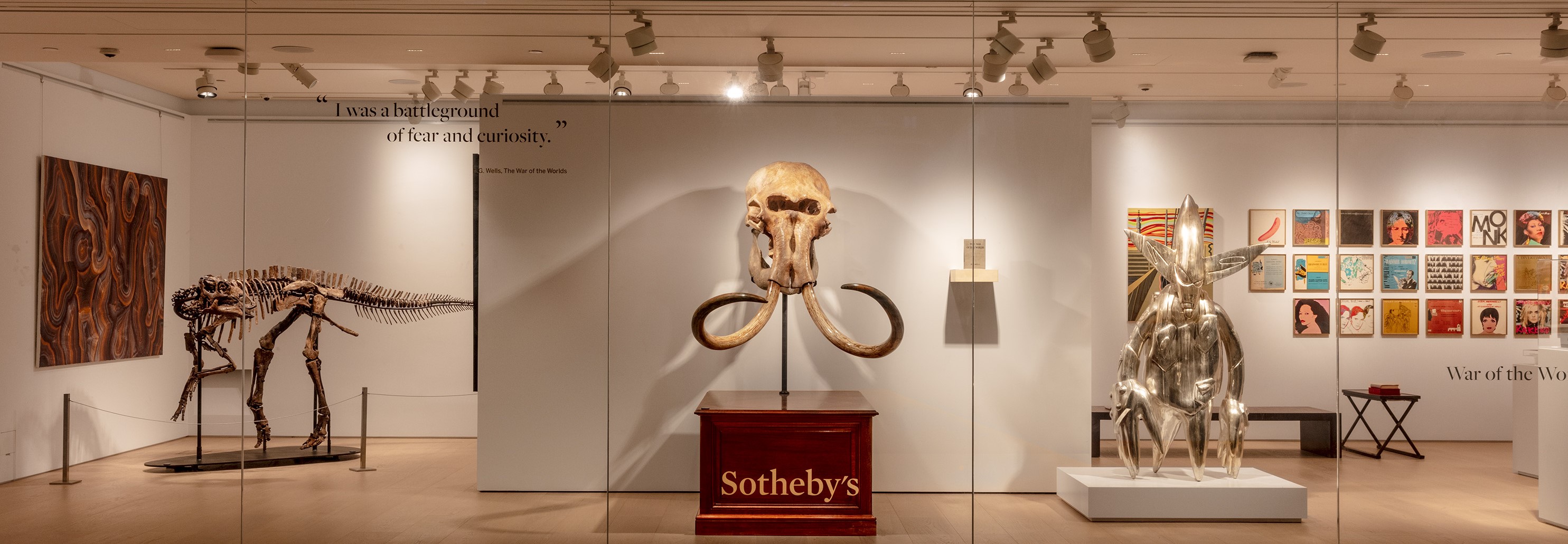
The auction industry in Hong Kong has entered a new era. Starting last year, we saw the opening of Phillips’ new Asia headquarters in the West Kowloon Cultural District. Sotheby's, celebrating its 50th anniversary in Asia, has set benchmarks both here and throughout the region. And it’s making history once again with the opening of Sotheby’s Maison at Landmark Chater and the introduction of a retail concept to the auction industry. Of course, it’s not an auction house party without Christie’s and Bonhams. The former has just relocated to its new 50,000-square-foot Asia-Pacific headquarters spanning four floors at Zaha Hadid Architects’ The Henderson, while the latter, demonstrating its equally firm commitment to the Asia auction market, is moving this month into a new three-storey, 19,000-square-foot headquarters at Six Pacific Place. What do these developments mean for the Hong Kong and Asia auction markets? While the global economy has taken a hit with the pandemic, particularly the art market, is this flurry of activity merely coincidental? Are the auction houses being overly optimistic? As collectors become more sophisticated, what’s next for auction houses in Hong Kong?
Sotheby's
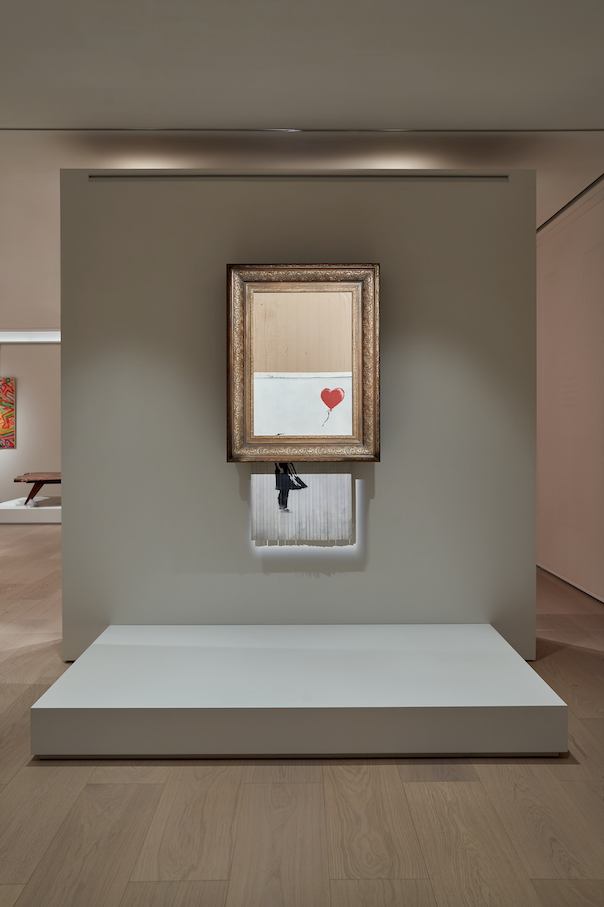
Once intimidating, auction houses – and even the concept of “art” itself – have become much more accessible in Hong Kong over the past decade. Sotheby’s Maison reflects the growth in local art fairs, galleries and museums in recent years but also looks to open a whole new chapter in the city’s cultural life.
Launched in July at Landmark Chater, the brand-new concept combines a state- of-the-art, museum-quality space for immersive viewing with a unique retail experience open to the general public. Imagine walking to work or going to dinner, only to be attracted by an Andy Warhol poster, Salvador Dalí sculpture, Korean moon jar or even a Renaissance painting.
“With our Maison, it’s going to be a year-round mixture of auction preview and private selling, while the Salon is a curated retail concept store,” explains Nick Buckley Wood, private sales director at Sotheby’s Asia, the latter referring to the first-floor Sotheby’s Salon consisting of seven salons showcasing over 200 objects available for immediate purchase. “We’re much more approachable than we ever were, and I think we’re the most public, the most visible auction house offering in the world.”
The opening of Sotheby’s Maison is indeed an exciting moment not only for Hong Kong but also the company as a whole. “Hong Kong is the second-biggest market behind New York. It’s become a very global market, especially in the past 10 years, as contemporary art and modern art have become a huge part of our business here,” Wood says. “Launching the first Maison in Hong Kong is continuing this, and is the first step into a new era where auction houses are not only for the secondary market but also serve as a marketplace.”
Visiting Sotheby’s, or any other auction house for that matter, used to be shrouded in mystery – requiring one register at an imposing lobby before ascending a skyscraper in a metal box. The Maison, with its street-level entrance and public accessibility, is changing all that. “The
key element is to be really visible. It just changed the game of not just our sales, but also the awareness of who we are,” Wood says. “And I believe we have to be in Central for this project. It’s right in the centre of Hong Kong – you can’t miss it. Everyone is welcome. It’s very important for us too; we have the opportunity to convert people into collectors of art or watches or jewellery or handbags, whatever it is, because we’re right there and we’re open 365 days a year. We’re going to continue exploring this model in other countries where we see that demand.”
As the online world grows faster and bigger, Sotheby’s Salon and the soon-to-open café are a testament to the continued importance of offline experiences. “We are one of the few companies in the world that can curate objects which span 80 million years. We have everything from fossils to street art, and we have purchase prices from HK$5,000 to HK$50 million. So, we’re very uniquely placed to do this,” says Wood. “It’s definitely the first time in Hong Kong, and perhaps globally that a retail shop has done what we’ve done. We have prints by Andy Warhol and movie posters at the lower price range, but at the same time you can find a Keith Haring painting or a Ming Dynasty chair that’s valued at over US$1 million.”
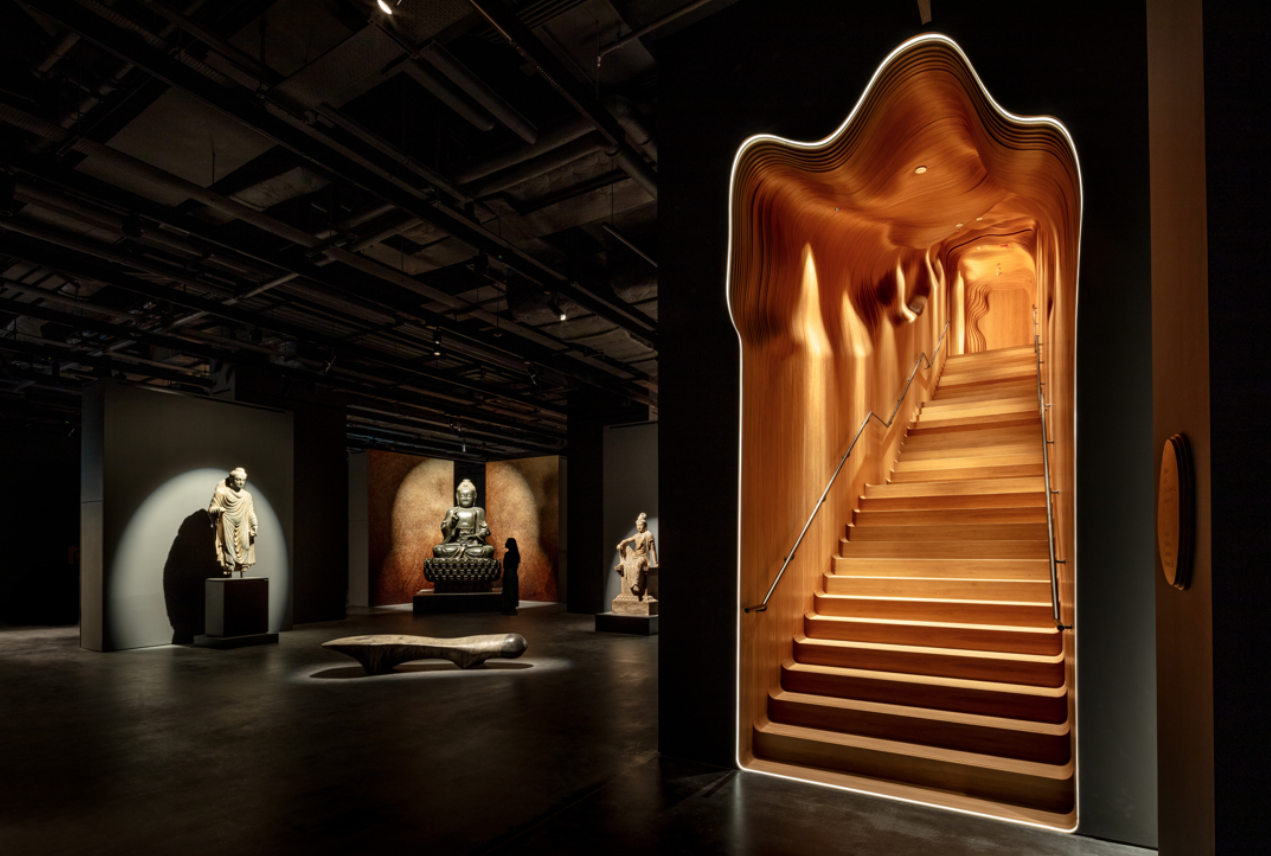
Another perk of the retail space is that it beats something Wood calls “the retail game”, a dance that sometimes can get awkward between clients and luxury brands or galleries. “For luxury items and art, chances are you can’t just walk into a shop and buy whatever you want. Before being allocated the best items, you need to buy a lot of stuff. The joy of coming into the Salon is you can discover things of a huge variety, or great quality and rarity, and just purchase what you like. You don’t have to spend time begging the gallery to sell it to you, or negotiating
with agents. The price is right there.”
But Sotheby’s Maison is not just here to sell exquisite objects. “We’re also about educating and getting the community involved. We’ll have projects aimed at families with children, or for new generations of collectors, plus interesting collaborations with artists.” The Maison kicked things off with the jaw-dropping and awe-inspiring Bodhi: Masterpieces of Monumental Buddhist Art exhibition, and is now showing The Giant Lotuses by Chang Dai-chien, which is deemed the most important piece in modern Chinese art history. Coming early next year, there will be an exciting performance by an experimental dance group from Japan.
When it comes to trends in the auction business, Wood points to private sales, which now account for one-eighth of the company’s turnover. “And it’s growing. So the Maison is part of our strategy to grow that. It’s much more of a volume model as we have so many visitors every day,” he says. Expanding the private sales business might be a good thing for Sotheby’s, given the state of the local and Asian art market in the wake of the pandemic.
“I think it’s natural to see this kind of healthy ‘correction’, and it’s a good thing there hasn’t been a crash. While keeping an eye on how the Chinese economy does, I’m still very optimistic,” Wood says. “We’re still seeing a lot of turnover in the market and that’s what we need. In the past 10 to 15 years, people in Asia were mainly buying, especially contemporary and modern art. However, the market is shifting as we see that instead of materials coming from outside of Asia and being sold here, materials from Asia are being sold within the region or even in Europe and America. So yes, the market is changing.”
In the coming decade, “quality” will be the keyword in the auction business. On the one hand there will be more demand for quality products while on the other collectors are becoming more knowledgeable. “Buyers from Asia are becoming more and more powerful internationally,” Wood notes. “For instance, a quarter of our buyers in the Modern Evening Auction in New York were from Asia, including one of the top lots in May.”
With the establishment of Sotheby’s Maison, Wood believes that growth across categories can be made possible after one major change in the auction schedule. “We’re going to follow our London and New York hubs, which have different schedules for each category. We’ll do that in Hong Kong from now on too, so we’ll have the auction previews in the Maison for one category, say modern and contemporary art, then it will be Chinese antiques the next week, followed by jewellery. The upside is that we can be more targeted and focused, while I suppose the downside is that cross- category selling is going to be less.”
From a small office in the ’80s selling mainly Chinese antiques to the auction house’s second-largest global hub, the journey for Sotheby’s Asia has not been an easy one. However, this year with its quieter market, perhaps it’s the perfect time to experiment with new business models.
Also see: Liao Jiaming on beauty standards and art
Christie's
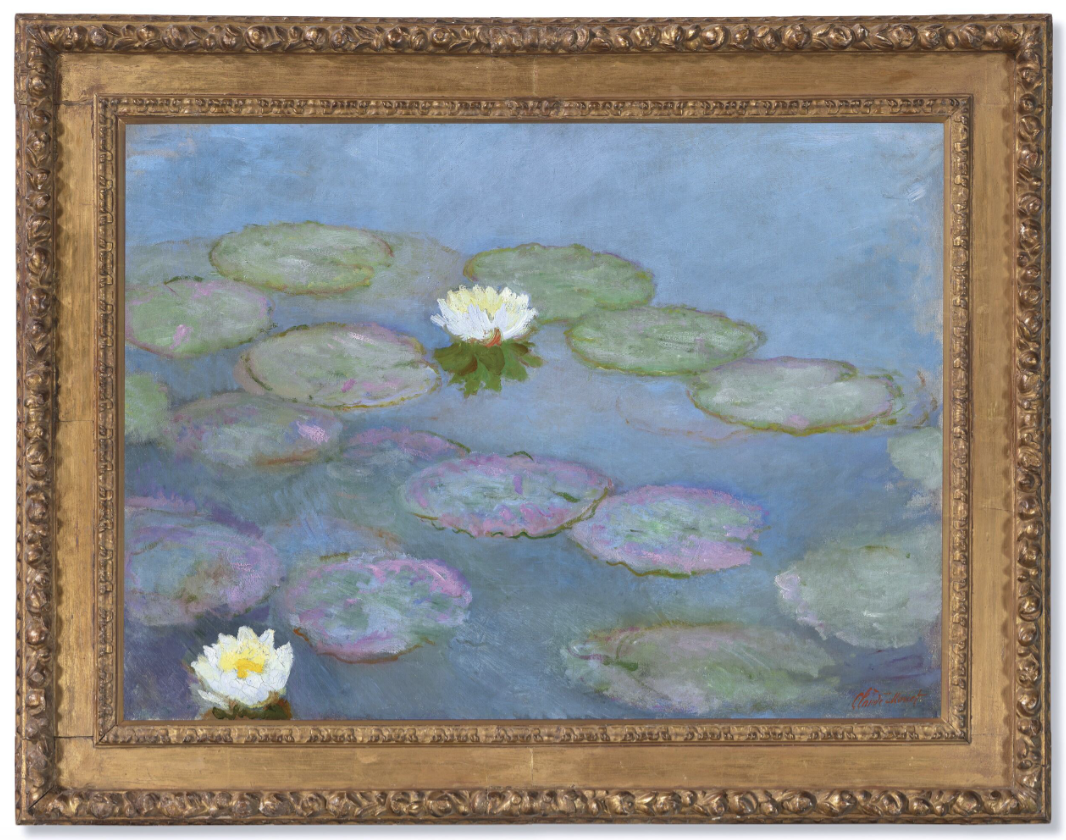
The Hong Kong skyline has a new addition: The Henderson, a futuristic creation by Zaha Hadid Architects. This striking building is now home to the headquarters of Christie’s Asia Pacific. The move was announced in 2021, and since then, the auction industry has endured quite a bumpy ride. So what does this self-described “transformational relocation” mean? And what can we expect from the new space?
The grand opening of the new Christie’s headquarters took place on September 20. Prior to the ceremony, some local members of the press previewed the building and found the high ceilings, ample natural light and overall simple but luxurious vibe to be a perfect match for the esteemed auction house. The opening ceremony featured a modernised lion dance performance, with ballerinas replacing traditional kung fu dancers, accompanied by orchestral music. Was it a subtle note from Christie’s about its East-meets-West approach in Hong Kong, or a modern way of respecting a tradition? While the audience was left to decide, one thing we could all agree on was the impressiveness of the Zaha Hadid Architects-designed staircase that heads from the lobby floor directly to Christie’s on the sixth floor.
Christie’s occupies four full floors at The Henderson, totalling 50,000 square feet. The facilities include a saleroom, galleries, dedicated client areas, and offices that are designed to be a one-stop hub for collectors from around the globe. To celebrate the new space, Christie’s has planned a three-month programme of art and luxury auctions, exhibitions and special events that coincide with the start of a dynamic new year-round sales and events calendar in Asia.
Also see: Balenciaga celebrates European Heritage Days with exhibition of Timeless Craftsmanship
“With one integrated hub at The Henderson, we have the long-needed flexibility to hold sales and activities in- house throughout the year, and expand our scope for creative exhibitions, innovation and educational programmes, enabling us to make significant progress towards our sustainability goals,” says Francis Belin, president of Christie’s Asia Pacific.
“Together with our highly experienced team across the region and advanced digital platforms, Christie’s is best placed to drive Asia’s global activity, serve the collecting community, and provide the strongest international platform for the masterpieces and extraordinary objects
we steward. Now, clients and audiences can participate in our auctions, view masterpieces in our galleries and meet our specialists all in one place, elevating our level of service to a new global standard.”
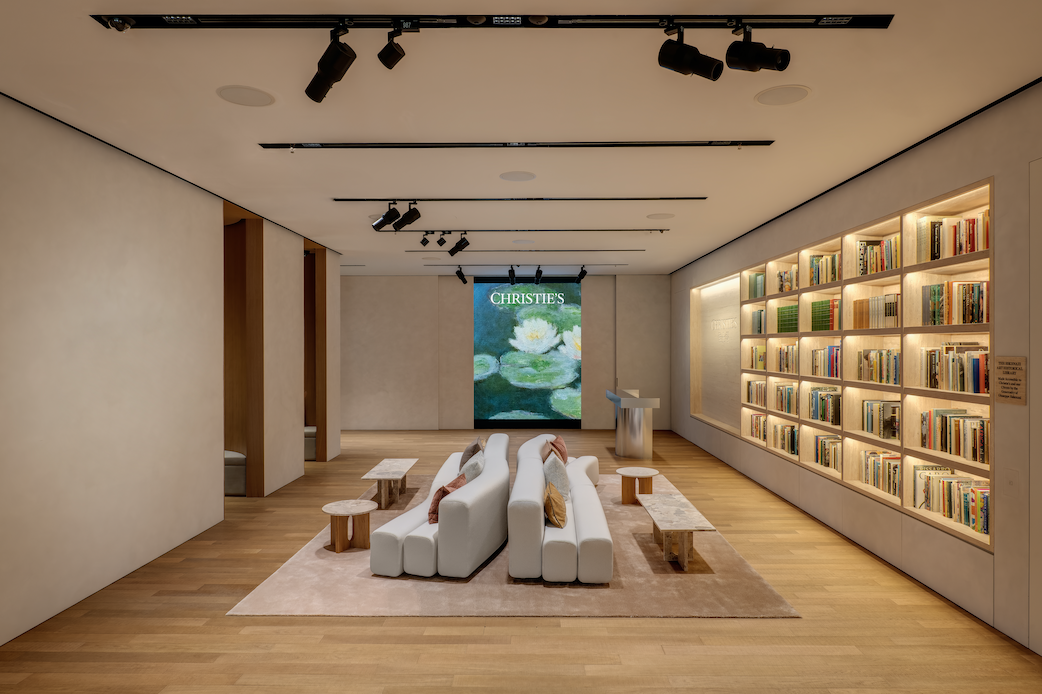
On the grand opening day, the gallery space that spans the entire sixth floor was showcasing lots from the 20th/21st Century Evening Sale, including key pieces for the Inaugural Evening Sale such as Les canots amarrés by Vincent van Gogh; Nymphéas by Claude Monet; 05.06.80 – Triptyque, which is one of the 12 triptychs created by Zao Wou-Ki in the 1980s; and Nu blanc au genou levé (White Nude, with Raised Knee) by Sanyu. Another highlight, and a feast
to the visitors’ eyes, was an exceptionally rare piece from L’empire des lumières by René
Magritte from the upcoming MICA: The Collection of Mica Ertegun sale in New York.
The seventh-floor gallery space, meanwhile, showcased exquisite pieces from the The Au Bak Ling Collection: The Inaugural Sale alongside some non- selling key historic pieces representing Chinese ceramics, as well as paintings from the 20th/21st Century Day Sale. The surprises continued with a wine cellar and extensive library on the eighth floor.
The new space’s versatility was demonstrated during the live auctions held shortly after the opening, with the seventh- floor gallery transformed into an auction floor with walls, lights and equipment easily reconfigured. The gallery spaces on the sixth and seventh floors feature 3.5m-high ceilings, flexible moveable walls, calibrated lighting and precision acoustics, allowing an array of masterpieces to be displayed in all their glory and their stories creatively brought to life. The pillarless structure of the building creates an open, uninterrupted flow, while an external gondola system and an operable façade on the sixth floor allow for the seamless transport of large-scale objects and artworks.
If you’re familiar with the usual practice at Christie’s, you probably expect there to be two major auction seasons each year with previews of all categories held in a rented space at the Hong Kong Convention and Exhibition Centre. But with the move to The Henderson, Christie’s is introducing a year-round auction calendar, alongside exhibitions, educational programmes and events. “The new space will be a year-round and unified art and luxury destination alongside Christie’s at Rockefeller Center in New York, King Street in London, and Avenue Matignon in Paris,” explains Belin.
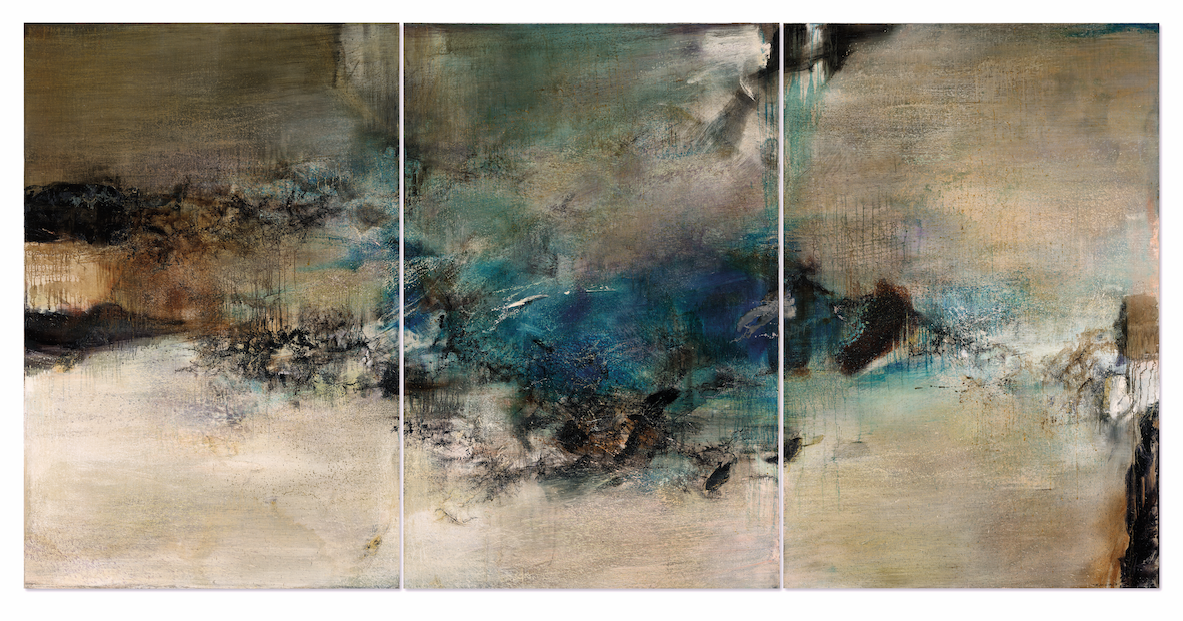
While it’s too early to gauge the success of this approach in Hong Kong and Asia, the Inaugural Evening Sale’s headline pieces – namely those by van Gogh, Monet and Zao Wou-Ki – although they broke some Asia records, realised prices around the middle of their estimated ranges. That being said, Christie’s is unique among the leading auction houses in that it has invested a great deal of time and effort in building an industry-recognised educational programme. Upcoming events at the new space include The Grand Prix d'Horlogerie de Genève Exhibition, Luxury Live Sales, and an Asian Art Week in November.
Additionally, Christie’s will host its 9th Art+Tech Summit Hong Kong on October 29, exploring the impact of emerging technologies like AI, digital art and fintech on the art world. The
event will showcase a diverse range of speakers at the intersection of art and technology, with record-breaking digital artist Mike Winkelmann, known as Beeple, participating remotely.
Aside from careful and smart marketing strategies, nurturing new and existing collectors has been pivotal to the auction house’s business. Recent figures show a rise in young collectors, with 43% of new buyers in Christie’s May sales being Millennials. To ensure sustainable growth in the auction business, it’s essential for buyers and sellers to identify the differences between art investment and art appreciation. Christie’s aims to empower and educate clients throughout their art collecting journey advocating for purchases that speak to the heart while aligning with individual interests and aspirations.
Despite the current slowdown in the art and auction market, Christie’s remains optimistic. Its experience has demonstrated that “when exceptional works are presented at realistic price points alongside exciting sale curation, the demand is significant”, a strategy that requires deep market knowledge and the expertise of a specialist team.
On the impact of its relocation in achieving a sustainable future, Belin says, “The Henderson’s unique and forward- looking design is itself a work of art, perfectly complementing the exquisite masterpieces that Christie’s offers across the globe. This unprecedented initiative, together with our presence in Beijing, Shanghai and other key cities in Asia, will enable Christie’s to respond to and build upon the recent record surge in worldwide collecting we have seen from Asian clients.”





























